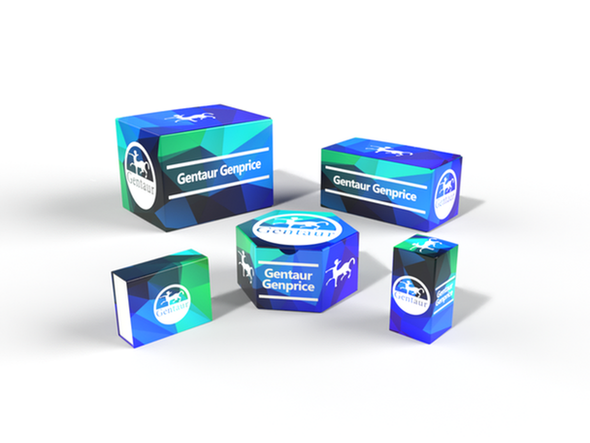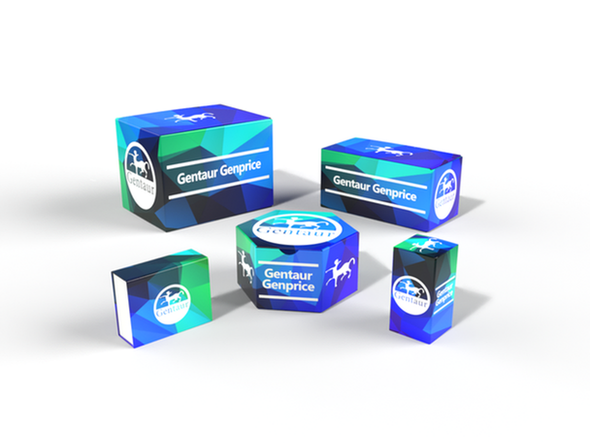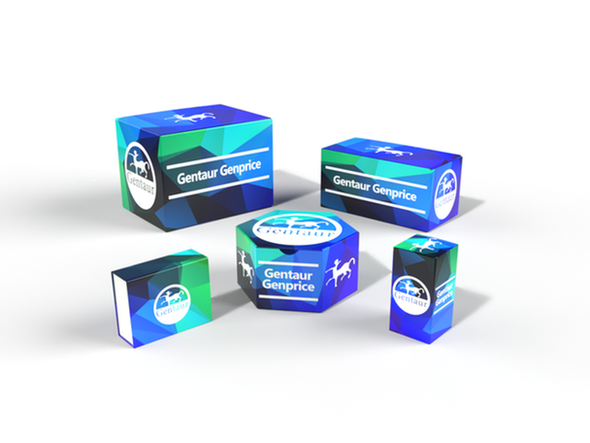Description
HDAC4 Antibody | 55-589 | Gentaur UK, US & Europe Distribution
Host: Rabbit
Reactivity: Human, Mouse
Homology: N/A
Immunogen: This HDAC4 antibody is generated from rabbits immunized with a KLH conjugated synthetic peptide between 1052-1084 amino acids from the C-terminal region of human HDAC4.
Research Area: Neuroscience, Signal Transduction
Tested Application: WB
Application: For WB starting dilution is: 1:1000
Specificiy: N/A
Positive Control 1: N/A
Positive Control 2: N/A
Positive Control 3: N/A
Positive Control 4: N/A
Positive Control 5: N/A
Positive Control 6: N/A
Molecular Weight: 119 kDa
Validation: N/A
Isoform: N/A
Purification: This antibody is prepared by Saturated Ammonium Sulfate (SAS) precipitation followed by dialysis
Clonality: Polyclonal
Clone: N/A
Isotype: Rabbit Ig
Conjugate: Unconjugated
Physical State: Liquid
Buffer: Supplied in PBS with 0.09% (W/V) sodium azide.
Concentration: batch dependent
Storage Condition: Store at 4˚C for three months and -20˚C, stable for up to one year. As with all antibodies care should be taken to avoid repeated freeze thaw cycles. Antibodies should not be exposed to prolonged high temperatures.
Alternate Name: Histone deacetylase 4, HD4, HDAC4, KIAA0288
User Note: Optimal dilutions for each application to be determined by the researcher.
BACKGROUND: DNA is wrapped around histone proteins to form nucleosomes and chromatin fiber, a higher-order structure. Chromatin can become alternatively revealed to or concealed from transcription factors. Acetylation of lysine residues induces conformational changes in core histones by destabilizing nucleosomes and allowing transcription factors access to recognition elements in DNA. Deacetylation of histones by histone deacetylases (HDACs) reseals the chromosomal package, leading to a repression of transcription. HDAC4 does not bind DNA directly, but rather through MEF2C and MEF2D. Binding of the N terminus of HDAC4 to MEF2C represses MEF2C transcription activity. The catalytic domain of HDAC4 interacts with HDAC3 via the transcriptional corepressor NCOR2. Experimental conditions leading to the suppression of HDAC4 binding to NCOR2 and to HDAC3 result in loss of enzymatic activity associated with HDAC4, indicating regulation of transcription by bridging the enzymatically active NCOR2-HDAC3 complex and select transcription factors. HDAC4 and MITR contain calmodulin-binding domains that overlap with their MEF2 binding domains. Binding of calmodulin to HDAC4 leads to its dissociation from MEF2, relieving MEF2 from the transcriptional repression by HDAC4. Together, HDAC4, MITR, and CABIN1 constitute a family of calcium-sensitive transcriptional repressors of MEF2. In murine studies, HDAC4, which is expressed in prehypertrophic chondrocytes, interacts with and inhibits the activity of Runx2 in mice, a transcription factor necessary for chondrocyte hypertrophy, establishing HDAC4 as a central regulator of chondrocyte hypertrophy and skeletogenesis.






